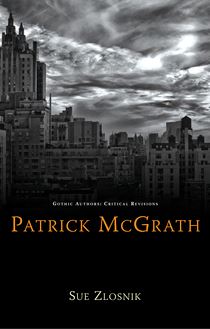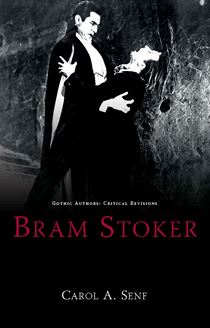-
 Univers
Univers
-
 Ebooks
Ebooks
-
 Livres audio
Livres audio
-
 Presse
Presse
-
 Podcasts
Podcasts
-
 BD
BD
-
 Documents
Documents
-
- Cours
- Révisions
- Ressources pédagogiques
- Sciences de l’éducation
- Manuels scolaires
- Langues
- Travaux de classe
- Annales de BEP
- Etudes supérieures
- Maternelle et primaire
- Fiches de lecture
- Orientation scolaire
- Méthodologie
- Corrigés de devoir
- Annales d’examens et concours
- Annales du bac
- Annales du brevet
- Rapports de stage
La lecture à portée de main
Vous pourrez modifier la taille du texte de cet ouvrage
Découvre YouScribe en t'inscrivant gratuitement
Je m'inscrisDécouvre YouScribe en t'inscrivant gratuitement
Je m'inscrisEn savoir plus
Vous pourrez modifier la taille du texte de cet ouvrage
En savoir plus

Description
Sujets
Informations
| Publié par | University of Wales Press |
| Date de parution | 15 avril 2011 |
| Nombre de lectures | 0 |
| EAN13 | 9781783164479 |
| Langue | English |
Informations légales : prix de location à la page 0,0450€. Cette information est donnée uniquement à titre indicatif conformément à la législation en vigueur.
Extrait
PATRICK McGRATH
S ERIES P REFACE
Gothic Authors: Critical Revisions is dedicated to publishing innovative introductory guides to writers of the Gothic. The series explores how new critical approaches and perspectives can help us to recontextualize an author’s work in a way that is both accessible and informative. The series publishes work that is of interest to students of all levels and teachers of the literary Gothic and cultural history.
S ERIES E DITORS
Andrew Smith, University of Glamorgan
Benjamin Fisher, University of Mississippi
E DITORIAL B OARD
Kent Ljungquist, Worcester Polytechnic Institute, Massachusetts
Richard Fusco, St Joseph’s University, Philadelphia
David Punter, University of Bristol
Angela Wright, University of Sheffield
Jerrold E. Hogle, University of Arizona
GOTHIC AUTHORS: CRITICAL REVISIONS
Patrick McGrath
Sue Zlosnik
© Sue Zlosnik, 2011
All rights reserved. No part of this book may be reproduced in any material form (including photocopying or storing it in any medium by electronic means and whether or not transiently or incidentally to some other use of this publication) without the written permission of the copyright owner. Applications for the copyright owner’s written permission to reproduce any part of this publication should be addressed to the University of Wales Press, 10 Columbus Walk, Brigantine Place, Cardiff, CF10 4UP.
www.uwp.co.uk
British Library CIP Data
A catalogue record for this book is available from the British Library.
ISBN 978-0-7083-2375-5 (hardback)
ISBN 978-0-7083-2374-8 (paperback)
e-ISBN 978-1-78316-447-9
The right of Sue Zlosnik to be identified as author of this work has been asserted in accordance with sections 77 and 79 of the Copyright, Designs and Patents Act 1988.
The publisher has no responsibility for the persistence or accuracy of URLs for any external or third-party internet websites referred to in this book, and does not guarantee that any content on such websites is, or will remain, accurate or appropriate.
Cover: Gothic Cityscape by Robert Daniel Ullmann
In loving memory of my mother, Elsie Wealleans Peters
A CKNOWLEDGEMENTS
Without the inspiration of the International Gothic Association and its conferences, this book would never have been written.
I am grateful to Manchester Metropolitan University for giving me a term’s relief from Head of Department duties and especially grateful to Berthold Schoene and Ann Holmes who saw the need and made it happen. Thank you to excellent colleagues Mike Bradshaw and Linnie Blake who looked after everything in my absence – and to all the members of the Department of English, without whom life would be much less interesting.
Andrew Smith and Benjamin Fisher, the general editors of this series, deserve a special mention. Special thanks too to Avril Horner, my long-time collaborator, who has been so supportive of this solo enterprise. Most of all, I am, as ever, indebted to my family – my three sons, James, Sam and Tom, and my husband, John – for more than I can say.
Finally, Patrick McGrath himself has taken a keen interest in the project and has been more than willing to answer my questions without attempting in any way to influence what I was writing. Thank you, Patrick.
C ONTENTS
Acknowledgements
Introduction
1 Playing with Gothic
2 The Transgressive Self
3 Worlds New and Old
4 Afterword: Exorcizing the ghosts of the Gothic
Notes
Select Bibliography
Introduction
‘Why are you so weird?’ According to Patrick McGrath, this is the question he and David Cronenberg asked each other on the set of Spider , the 2002 adaptation of McGrath’s novel of the same name. 1 The answer to this question is beyond the scope of this book. The persistence of the ‘weird’ in McGrath’s writing, however, is central to its discussion of his work in relation to the Gothic tradition. In a recent interview following the publication of his most recent novel, Trauma , he claimed that he did not want to be labelled as a Gothic writer. 2 However, when a new critical edition of Daphne du Maurier’s short stories was published in 2008, recent critical recognition of her Gothic sensibility was marked by the fact that it was McGrath who was invited to write an introduction. 3 In spite of his reluctance, he remains the contemporary literary novelist preeminently associated with the Gothic; indeed, one reviewer has suggested that ‘he may be the best Gothic novelist ever’. 4 When invited to write an essay on the nature of Gothic for Cristoph Grunenberg’s Gothic (a glossy compilation of material from different art forms) he entitled it ‘Transgression and Decay’, suggesting that these are the features that define the Gothic in its representation of what Freud identified as ‘the death wish’. 5 Recognizing the political potential of Gothic’s transgressive tendency, he acknowledges its ‘impulse to identify specific conditions and power relations that foster what we experience as evil’, and claims that ‘Gothic allows us to manage the nightmares of a world in which control seems increasingly tenuous’. 6
No longer do scholars identify Gothic as a historically defined novel genre, located at the end of the eighteenth century; instead, they tend to see it as a mode of writing intrinsic in all its variations to the rise of modernity. 7 As Fred Botting points out in his introduction to the English Association’s 2001 collection of essays, entitled, problematically it would seem, The Gothic : ‘These days it seems increasingly difficult to speak of “ the Gothic” with any assurance.’ The term, he goes on to suggest, continues to spread, generating a variety of qualifying adjectives (‘postcolonial Gothic’ and ‘queer Gothic’, for example, alongside such historically specific terms as ‘Victorian Gothic’). This diffusion continues to ‘“Gothicize” a host of different sites, from a Gothic imagination to a Gothic nature, from body, desire and unconscious to science and technology’. 8 Transgression inevitably implies boundaries; in Gothic, boundaries are transgressed. More disturbingly, they are often shown to be unstable with monstrosity, horror or terror lurking in their liminal spaces. Such a concern with the permeability of boundaries, it has been suggested, manifests a deep anxiety about the coherence of the modern subject. 9 Indeed, Gothic writers deliberately exploit the fear of the ‘Other’ encroaching upon the apparent safety of the post-Enlightenment world and the stability of the post-Enlightenment subject in order to achieve their effects. 10
McGrath’s discomfort with the label ‘Gothic novelist’ raises a number of interesting questions. In contemporary writing, where are the limits of Gothic? How do we now define this mode, and how indeed does a writer like McGrath make and remake Gothic writing? This book examines the evolution of his writing, considering each text in turn while identifying continuing threads and establishing connections with the Gothic tradition in which he initially placed himself. Words, images and themes in the early work find expression of increasing complexity in the later novels. As his career has progressed, there has been a shift of emphasis so that the flamboyant parody of the early work gives way to a more subtle intertextuality in its representation of transgression and decay, themes that continue to inform his work. Richard Davenport-Hines’s magisterial and interdisciplinary Gothic: 400 Years of Excess, Horror, Evil and Ruin (1998) makes this judgement on McGrath’s work up to that date:
McGrath is a dandyish stylist who depicts tumult, evil, monstrosity, disease, madness, horror and death with hallucinatory menace. Like many early Goth novelists, his narratives often lead the reader into discoveries of danger within what had seemed safe. He is pitiless about human confusion and sometimes painterly in the way of David Lynch. While McGrath’s most relentlessly Gothic work seems frivolous or ephemeral pastiche, he achieves superb effects when the Gothicism is relaxed. 11
Without acknowledging that the early, more overtly parodic, work is ‘frivolous or ephemeral pastiche’, this book argues that the change of emphasis in the later works achieves a different kind of Gothicism. Whereas the early work is clearly influenced by a postmodern preoccupation with play and parody, the 1996 novel Asylum takes the fiction in a different direction. Adopting some of the conventions of realism while continuing to make use of the unreliable and complicit first-person narrator, it presents a text the surface of which appears to be anti-Gothic but with depths that probe disturbingly the boundary between sanity and madness. In Martha Peake (2000), realism and postmodern parodic Gothic are played off against each other in a novel that signals the shift into the twenty-first century and into the narratives of America that constitute the later work.
In a 2001 interview, McGrath identified the novelist John Hawkes as a key formative influence on his work. Asked what his literary references were, he replied:
They change all the time, depending what I’m thinking about in my work. When I got to New York in 1981, I was just starting to write, and that’s when I found Hawkes’s work. It was a sort of … flash. I thought this is – particularly Travesty – this is what the novel should be. Psychologically dark, a tight, elegant structure, deeply disturbing, first person narration, slim. 12
McGrath seems to have found twentieth-century echoes of Poe in Hawkes’s work. He likens Travesty ’s tale of a speeding car, narrated by its mad driver, who is bent on the destruction of his passengers and himself, to Poe’s ‘The Cask of Amontillado’: in both the reader is trapped in the mind of the narrator and in the book itself. 13 When McGrath co-edited with Bradford Morrow a collection of short stories, The New Gothic , in 1991, Hawkes was a contributor. This volume pays tribute in its introduction to Poe for turning the Got
-
 Univers
Univers
-
 Ebooks
Ebooks
-
 Livres audio
Livres audio
-
 Presse
Presse
-
 Podcasts
Podcasts
-
 BD
BD
-
 Documents
Documents
-
Jeunesse
-
Littérature
-
Ressources professionnelles
-
Santé et bien-être
-
Savoirs
-
Education
-
Loisirs et hobbies
-
Art, musique et cinéma
-
Actualité et débat de société
-
Jeunesse
-
Littérature
-
Ressources professionnelles
-
Santé et bien-être
-
Savoirs
-
Education
-
Loisirs et hobbies
-
Art, musique et cinéma
-
Actualité et débat de société
-
Actualités
-
Lifestyle
-
Presse jeunesse
-
Presse professionnelle
-
Pratique
-
Presse sportive
-
Presse internationale
-
Culture & Médias
-
Action et Aventures
-
Science-fiction et Fantasy
-
Société
-
Jeunesse
-
Littérature
-
Ressources professionnelles
-
Santé et bien-être
-
Savoirs
-
Education
-
Loisirs et hobbies
-
Art, musique et cinéma
-
Actualité et débat de société
- Cours
- Révisions
- Ressources pédagogiques
- Sciences de l’éducation
- Manuels scolaires
- Langues
- Travaux de classe
- Annales de BEP
- Etudes supérieures
- Maternelle et primaire
- Fiches de lecture
- Orientation scolaire
- Méthodologie
- Corrigés de devoir
- Annales d’examens et concours
- Annales du bac
- Annales du brevet
- Rapports de stage
















